Here comes the wish list. May Allah bless me with good health, happiness and prosperity..
1. Mecca and Madinah, Saudi Arabia
I'm waiting for the right moment to go there as I have two small kids. Now it's not the suitable age either to go there without them or bring them to perform Umrah,
The Umrah (Arabic: عمرة) is a pilgrimage to Mecca, Saudi Arabia, performed by Muslims that can be undertaken at any time of the year, in contrast to the Hajj. In Arabic, Umrah means "to visit a populated place". In the Sharia, Umrah means to perform Tawaf round the Kaaba and Sa'i between Al-Safa and Al-Marwah, after assuming Ihram (a sacred state), either from a Miqat like Zu 'l-Hulafa, Juhfa, Qarnu 'l-Manāzil, Yalamlam, Zāt-i-'Irq, Ibrahīm Mursīa, or a place in Hill. It is sometimes called the 'minor pilgrimage' or 'lesser pilgrimage', the Hajj being the 'major' pilgrimage and which is compulsory for every able-bodied Muslim who can afford it. The Umrah is not compulsory but highly recommended.
 |
| Mecca |
| Madinah |
2. Scotland
Been there. Browse through my experience in Scotland at http://zuldiya.blogspot.my/2015_03_01_archive.html. However due to time constraint, we did not go to the Isle of Skye
 |
| Isle of Skye |
3. Iceland
Influenced by The Secret Life of Walter Mitty, I've been eyeing for this country for the past 2 years. And the recently trending clips from Dilwale, Gerua has further increase the adrenaline.
 |
| Jakusarlon Glacier Lagoon, South Iceland |
 |
| Foss a Sidu |
Foss a Sidu (or more accurately Foss á Siðu, which literally means "waterfall at Siðu") was a conspicuous waterfall as we drove along Southern Iceland along the Ring Road.
 |
| Gulfoss waterfall |
 |
| The Secret Life of Walter Mitty |
4. Verdon Gorge, South France
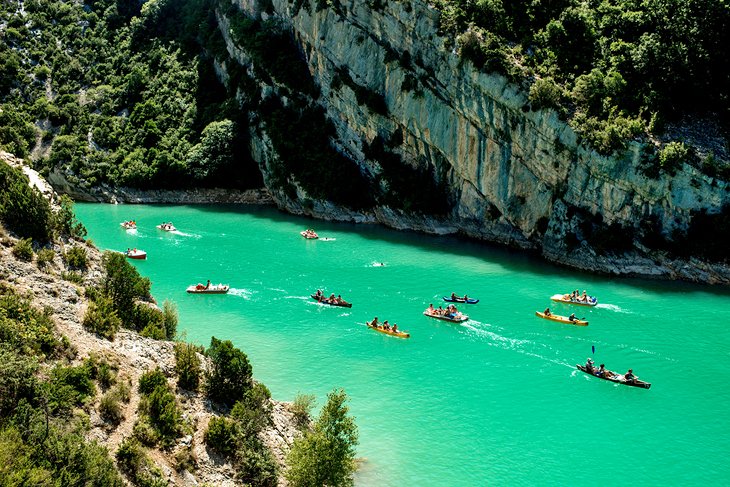 |
| Gorges du Verdon |
Verdon Gorge truly is Europe's 'Grand Canyon' (it is sometimes referred to as the 'Grand Canyon du Verdon') and is stunningly beautiful. The canyon has been carved by the Verdon River, leaving the turquoise river now flowing at the base of high limestone cliffs.
The most impressive part of the gorges lies between the towns of Castellane and the Lac de Sainte-Croix south of Moustiers-Sainte-Marie.
The canyon is extremely popular, both with those who choose to drive around the top - 130km drive on roads that are often slow moving, but have great dramatic views - and those who kayak, raft or walk along the river itself at the bottom of the cliffs.
 |
| Lac de Castillon |
 |
| Lac de Sainte-Croix |
There are several lakes along the length of the Gorges du Verdon, the most important being the Lac de Castillon (north of Castellane) and the Lac de Sainte-Croix at the western end of the gorges.
The Lac de Sainte-Croix in particular is very well organised for tourists, and has several lake beaches, although it does become rather busy during the summer.
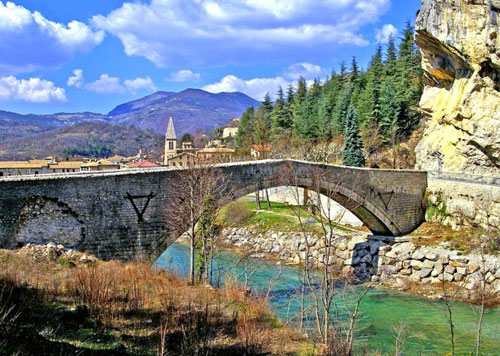 |
| Castellane |
The town of Castellane is a very old city located upstream of the Gorges du Verdon. The city is 724 meters above sea level.
5. New Zealand
We have to visit New Zealand by 2017 as my little brother's graduation will be somewhere in 2017. He's in Christchurch. I have 1 year plus to save money for the trip. Pressure huh!
 |
| Milford Sound |
Milford Sound is formed by glaciers during the Ice Age, the landscape around Milford Sound still bears evidence of its creation in the form of epic scenery: Cliffs rise from fjords crowned by mountains and waterfalls.
 |
| Te Whakarewarewa Geothermal Valley |
Te Whakarewarewa (pronounced fa-ka-re-wa-re-wa) is a thermal reserve 3km south of the city centre of Rotorua. This area’s full name is Te Whakarewarewatanga o te Ope Taua a Wahiao, meaning ‘The Gathering Together of the War Party of Wahiao’, although many people just call it ‘Whaka’. Either way, the reserve is as famous for its Maori cultural significance as its steam and bubbling mud. There are more than 500 springs here, including a couple of famed geysers
 |
| Waitomo Glowworm Caves |
The Waitomo Glowworm Caves, located just outside the main Waitomo township on the North Island of New Zealand, is a famous attraction because of a sizeable population of glowworms that live in the caves. Glowworms or Arachnocampa luminosa are tiny, bioluminescent creatures that produce a blue-green light and are found exclusively in New Zealand.
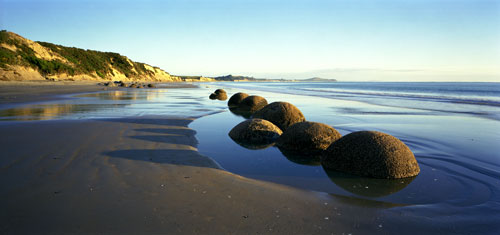 |
| Moeraki Boulders |
At Moeraki, 40 kilometres south of Oamaru, huge spherical boulders are scattered along the beach. Others can be seen emerging from the sandstone cliffs. Each boulder weighs several tonnes and is up to two metres high.According to Maori legend, the boulders are gourds washed ashore from the great voyaging canoe Araiteuru when it was wrecked upon landfall in New Zealand hundreds of years ago.Scientists explain the boulders as calcite concretions formed about 65 million years ago. Crystallization of calcium and carbonates around charged particles gradually formed the boulders in a pearl-like process that took as long as four million years. The soft mudstone containing the boulders was raised from the seabed around 15 million years ago; waves, wind and rain are excavating them one by one.The viewing platform, just a few minutes walk through regenerating native forest, offers an excellent view of the boulders. If you're lucky, you might also see Hector's dolphins playing in the waves.
 |
| Fox and Franz Josef glaciers |
While glaciers around the world are retreating, the Fox and Franz Josef glaciers still flow almost to sea level. The temperate climate at this low altitude means these glaciers are among the most convenient to visit in the world. Easy walks to the foot of the glaciers pass along ancient river valleys with steep sides bearing gigantic horizontal scars from when the glaciers have retreated and advanced over millennia. When you stand close to the foot of these glaciers, their sheer enormity is very humbling.
6. Turkey
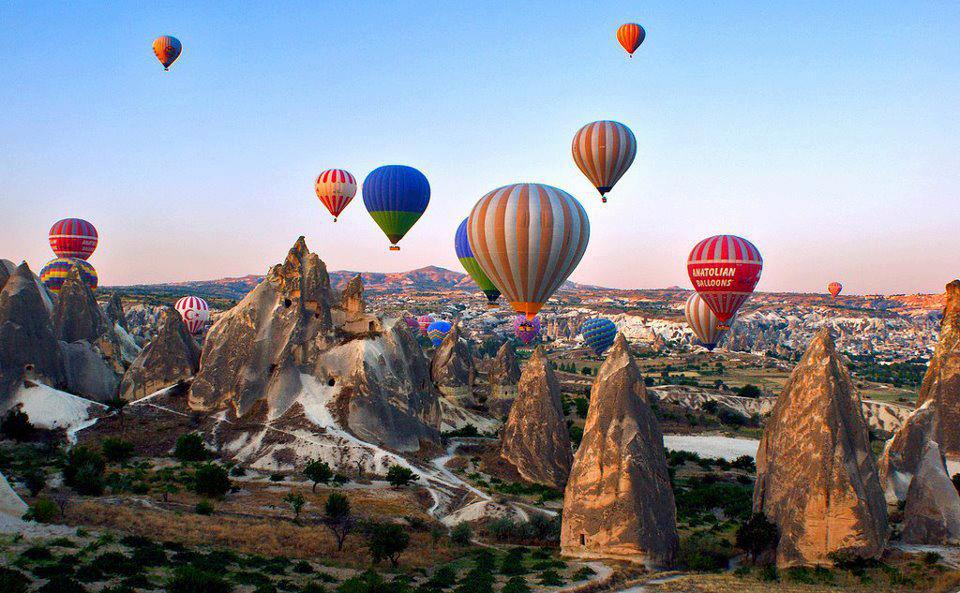 |
| Cappadocia |
As if plucked from a whimsical fairytale and set down upon the stark Anatolian plains, Cappadocia is a geological oddity of honeycombed hills and towering boulders of otherworldly beauty. The fantastical topography is matched by the human history here. People have long utilised the region's soft stone, seeking shelter underground and leaving the countryside scattered with fascinating troglodyte-style architecture. The fresco-adorned rock-cut churches of Göreme Open-Air Museum and the subterranean refuges of Derinkuyu and Kaymaklı are the most famous sights, while simply bedding down in one of Cappadocia's cave hotels is an experience in 21st-century cavern dwelling.
 |
| Orthodox Monastery of Sumela |
The Sumela Monastery is one of the oldest and most historic monasteries in the Christian world. There are no exact records about when it was built or by who, but it is estimated that its history dates back some one thousand years and that the locals who constructed it did so to escape enemy attacks. Located high up on the steep cliffs above the surrounding forest in Trabzon, Turkey, this incredible feat of architecture has changed hands many times over the course of its existence, until it was finally abandoned in 1923.
 |
| Hagia Sofya |
 |
| Pamukkale |
The name is a Turkish word meaning cotton castle and it is pretty obvious why it has been called that. In the blazing sun, the white travertines are a sight to behold, especially with the contrast of blue waters contained within. Pamukkale is pretty huge – 2700 metres long, 160 metres high, and 600 metres wide.
There are many levels of terraces, almost all containing pools of warm water. One can walk up the length of the travertines but in order to protect them, it can only be done so barefoot. Sharp pebbles can be an annoyance but the flowing hot springs instantly provide a soothing relief to your feet.
7. Spain
 |
| Cordoba |
Cordoba is situated in the interior of Andalusia where past and modernity blend in together. This thousand-year-old city, which has the World Heritage designation, is a living legacy of the different cultures that settled here throughout its history.
Not many places in the world can say they have been the capital of Hispania Ulterior (Further Spain) under the Roman Empire, and capital of the Umayyad Caliphate. This splendour can also be seen because of the intellectualism of this city of knowledge, where figures like Seneca, Averroes or Maimonides were born.
 |
| Alhambra |
The Alhambra is more than a just a palace; it is an entire walled city within the city of Granada. There are royal apartments, forts, gardens, pavilions, barracks. All this surrounded by an impressive wall.
 |
| Seville |
Situated on the banks of the Guadalquivir River, Seville has a rich Moorish heritage, and used to be a prosperous port that carried out trade with the Americas.
The streets and squares in the historic quarter of the capital of Andalusia are lively and busy. They treasure many constructions that have the World Heritage designation, and many districts are full of traditional culture, like Triana and La Macarena.
 |
| Barcelona |
With other major works in the city including La Casa Batlló and La Pedrera, this has to be one of Antoni Gaudí’s most celebrated and it is certainly one of the most emblematic of Barcelona. The area was originally meant to be a residential property development with Gaudi doing much of the planning and landscape design. Only two houses were built and the land was later sold to the city of Barcelona and turned into a park. It is home to the famous Salamander sculpture, as well as other buildings and structures designed by the architect. With stunning views of the city, this is a magical experience.
 |
| Sagrada Familia |
After 133 years of construction, the finish line is in sight for the Sagrada Família in Barcelona.
The massive cathedral, one of Barcelona’s top tourist attractions, has finally entered the final stage of construction. It’s slated for completion in 2026 — 100 years after its architect, Antoni Gaudí, died in a tram accident.
While 10 years seems like a long time, 30% of the building still needs to be constructed. Six more towers will be added, including a 564-foot central tower that will make the Sagrada Familia the tallest religious building in Europe.
8. Tuscany, Italy
My trip to Verdon Gorge, France actually can be combined with visit to Florence.
 |
| 7 hours drive from Florence, Italy to Verdon Gorge, France |
 |
| Ponte Vecchio |
Spanning the Arno River, the Ponte Vecchio is one of Florence’s oldest and most photographed bridges. Noted for its three segmented arches, the bridge was first built by the Etruscans and later rebuilt in the 14th century. The bridge’s most striking feature is the line of high-end jewelry shops flanking along each of its edges. Many visitors come here to shop and take photographs. Night time presents stunning views when the lighting from the bridge is reflected upon the water.
 |
| Val d'Orcia, Tuscany |
Val d’Orcia is a picturesque region of Tuscany that is around a two-hour train ride from Florence. It includes several amazing villages, castles, hamlets, and farmhouses that visitors can get to all in one short trip. The entire area is protected as a natural park. The medieval castles are not to be missed, nor is the village of Pienza, called the “Ideal City”. Other famous villages include Radicofani and Montalcino, which has a 14th-century fortress offering stunning views of the valley and some of the region’s finest wine.
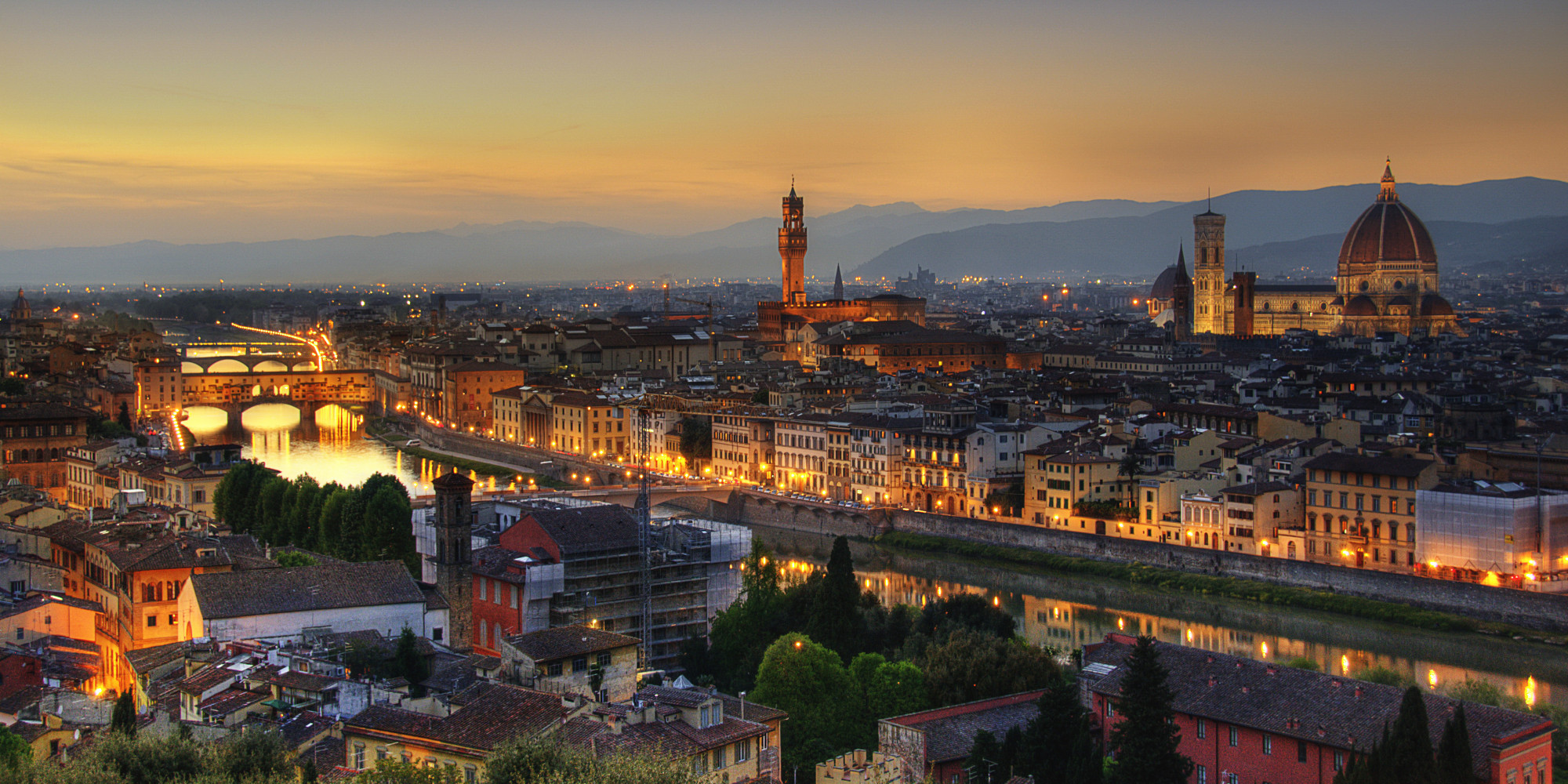 |
| Forget Rome, I love Florence |
Florence is one of Italy’s most stunning cities, with an historic city centre – a Unesco World Heritage Site since 1982 – featuring an impressive collection of art galleries and an imposing cathedral.
Its heritage and its tax-free shopping opportunities.
9. Lombok, Indonesia
Long overshadowed by its superstar neighbour across the Lombok Strait there's a steady hum about Lombok that catches the ear of travellers looking for something different from Bali. Blessed with exquisite white-sand beaches, epic surf, a lush forested interior, and hiking trails through tobacco and rice fields, Lombok is fully loaded with equitorial allure. Gunung Rinjani, Indonesia's second-highest volcano, its summit complete with hot springs and a dazzling crater lake is also here.
And there's much more. Lombok's southern coastline is nature on a very grand scale: breathtaking turquoise bays, world-class surf breaks and massive headlands. They keep saying development on these splendid beaches is just around the corner, but until that moment comes, they are easy to explore over much-improved roads.
 |
| Gunung Ranjini |
 |
| Tiu Kelep waterfall |
 |
| Gili Trawangan |
10. Great Ocean Road, Australia
The Great Ocean Road is an epic Aussie journey through lush rainforests, koala-filled tree canopies, sleepy seaside towns and wild isolated beaches. The road hugs the south-eastern Victorian coastline as it winds its way the 243 km. from Torquay to Warrnambool, between Melbourne and Adelaide. A good old-fashioned road trip is one of the best ways to explore the vast and diverse country of Australia.
It is said to be one of the world’s most breathtaking scenic drives. The drive can be in a day but most people prefer to take three to stop at the iconic natural landmarks and enjoy the historic villages and rugged coastal prospects. Most road-trippers head off from Melbourne, the cultural capital of Australia, which lies about 100 km. north of the starting point of the Great Ocean Road.
opt.jpg) |
| Torquay |
The journey begins in Torquay, Victoria’s surfing mecca (home to iconic brands Rip Curl and Quicksilver). W
From Torquay, through varying terrain. a unique rock formations that pepper the coastline can be observed. At one point, you will see the Twelve Apostles, giant rock stacks carved from the coast over millions of years.
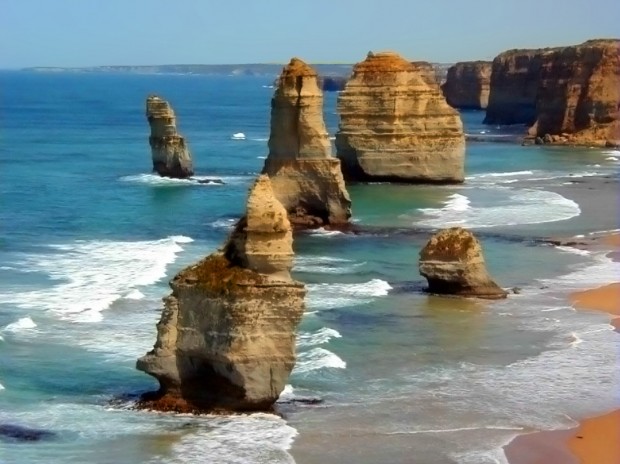 |
| 12 Apostles |
Stop along the way to snap a picture, climb to the peak of volcanic craters, relax atop cliffs or go exploring for wildlife through lush rainforest in the Great Otway National Park.
 |
| Warnambool |
Aside from affording views of spectacular scenery, The Great Ocean Road is known for its history. It is an Australian national heritage-listed site and one of the world’s largest war memorials. It was built by about 3,000 returned soldiers between 1919 and 1932 and was dedicated to all those killed during The First World War. The road trip wraps up in Warrnambool, known as the Shipwreck Coast, for its wild seas and unmerciful currents.


No comments:
Post a Comment